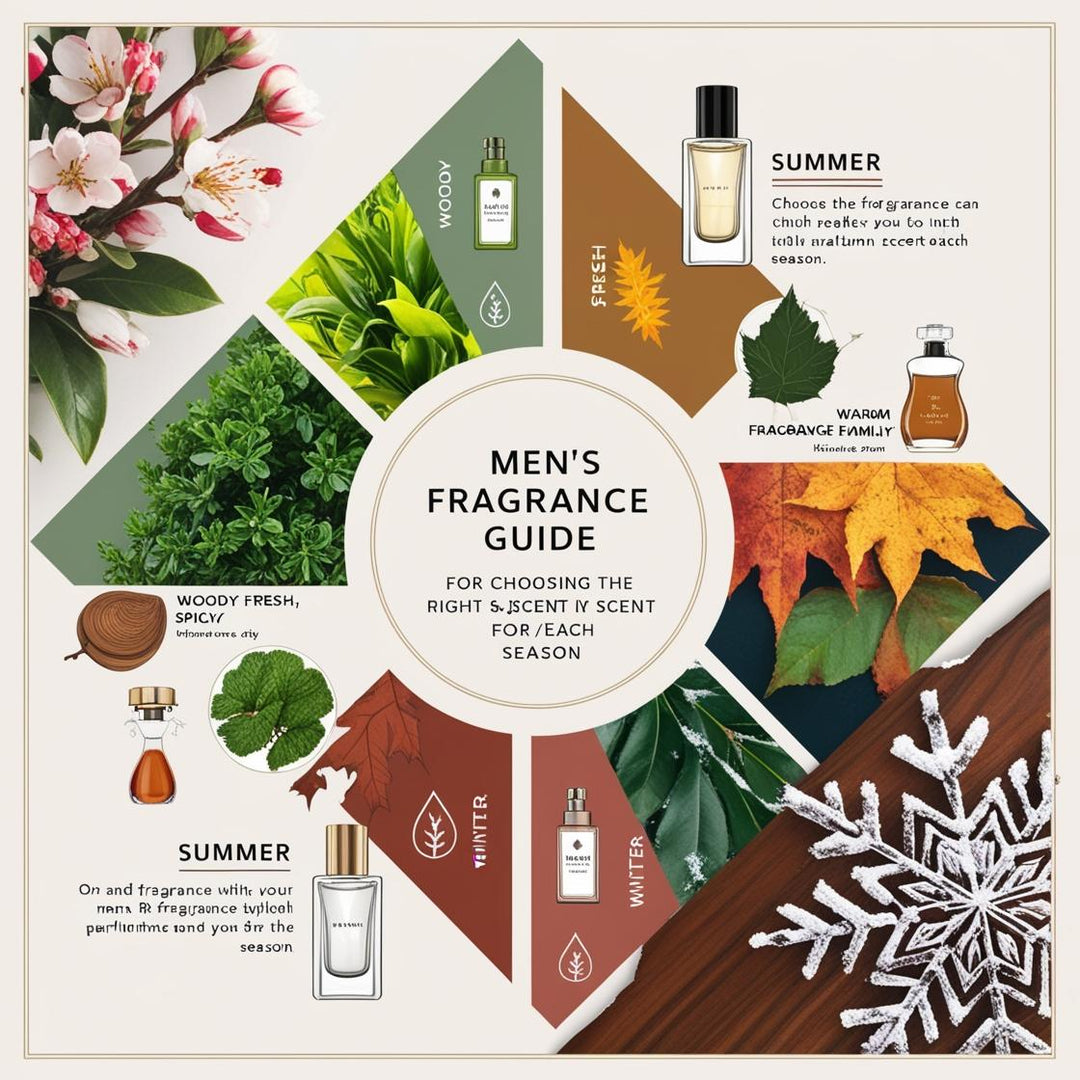How to Make Fragrance Oils: Easy Steps for Custom Scents
Creating your own custom fragrance oils at home is a simple and cost-effective solution to having a scent that truly represents you. So, if you're wondering how to make fragrance oils that leave a lasting impression, I am here to help you.
With my directions, you can easily create your own perfume oils at home with few simple ingredients and creativity.
So, let's get started.

How To Make Fragrance Oils at Home?
The key to making fragrance oils is to understand the science behind them. Fragrance oils are made up of concentrated perfume particles that are suspended in an oil base. Essential oils are aromatic compounds that give the fragrance its scent. And the base can be a combination of carrier oils, such as jojoba or almond oil.
Comprehensive steps to creating your custom fragrance oil:
1. Essential Materials
Before beginning the process of making fragrance oils, gathering the necessary materials and ingredients is crucial. The essentials include:
- Essential oils
- Carrier oils
- Preservatives
- Measuring pipettes or droppers
- Mixing bottles
- Perfume oil container for storing the final product
2. Right Consistency Ratio
Precise measurement ensures the correct fragrance strength in your fragrance oils.
Fragrance oils are typically made up of 80% carrier and 20% essential oils, meaning for 20 ml of fragrance oil, you will need 4 ml of essential oils.
In other words, for every 100 drops, 20 drops should be of essential oils, and 80 drops should be of carrier oils.
There are several methods for measuring the ingredients, including using a digital kitchen scale or measuring pipettes.
It's important to keep in mind that essential oils should contain the following ratios of top, middle, and base notes:
- 15-20% of Top Notes
- 30-40% of Middle Notes
- 45-55% of Base Notes
Once you have the correct ratio, mix the essential oil blend and carrier oil in a mixing container. Allow the mixture to marinate for a minimum of one month before using.
3. Decide What Kind of Fragrance You Want to Create
When creating fragrance oils, choosing the right type of fragrance is essential. There are several categories to choose from, such as sweet, spicy, woody, fruity, and herbal.
For example, sweet fragrances might include vanilla or flowery scents, while spicy ones might include cinnamon or spice notes. Woody fragrances include woods such as sandalwood, and fruity scents consist of citrus notes.
Choosing essential oils that match the type of fragrance you want to create is important.
For a sweet-scented fragrance oil, choose a base note of vanilla or marshmallow and a top note of pear or orange.
You can achieve a well-rounded fragrance by including top, middle, and base notes in your essential oil blend.
But if you don't have all three categories of notes at home, having at least one strong base note will do the work.
Base notes are intense and tend to last longer, while middle notes are slightly less intense. Top notes are the first fragrances you'll pick up on, but they quickly evaporate.
4. Blend Essential Oils for Desired Fragrance
When blending essential oils, consider using one base note or a mixture of two or more.
Make sure to balance the strengths of each essential oil to prevent one from overpowering the other.
Let the blended oils sit and marinate in a cool, dark place away from sunlight for the best results.
To make the fragrance gentler for skin application, dilute the essential oils with carrier oils. Doing this will reduce the risk of skin irritation.
5. Best Carriers to Use When Making Fragrance Oils
Common carriers used in making fragrance oils include sweet almond oil, jojoba oil, sunflower oil, and fractionated coconut oil.
We recommend using a carrier oil that is light in texture and odourless to preserve the authenticity of the fragrance.
Before selecting a carrier oil, check if it is compatible with your skin type and consider any added benefits for bath and body products, such as nourishing properties.
6. Store and Preserve Fragrance Oils for Long-Term Use
After combining the essential oils and carrier oils, add a drop of vitamin E oil and let it sit for a month.
Vitamin E helps keep the fragrance oil from turning brown and extends its shelf life.
Store the fragrance oil in an airtight container and keep it away from heat, light, and moisture.
When ready to use it, put the fragrance oil in a small glass bottle with a roller ball for easy application.
If you want to transform your space with perfume oils, read our blog on Why Room Fragrance Oils are a Game Changer for Your Home.
Create Unique Scents by Layering Different Fragrance Oils
When it comes to fragrance oils, you have the freedom to create your own signature scents.
The layering of fragrance oils is based on the scent notes in each oil. Some popular fragrance oil combinations include:
- Citrus and Floral: Mix lemon, bergamot, and jasmine for a fresh and bright scent.
- Floral and Woody: Blend rose and sandalwood for a romantic and warm fragrance.
- Citrus and Spicy: Mix lemon and cinnamon for a zesty and warm scent.
- Floral and Spicy: Blend lavender and clove for a calming and comforting fragrance.
- Woody and Spicy: Mix cedarwood and nutmeg for a grounding and warm scent.
- Fruity and Floral: Mix peach and rose for a sweet and floral fragrance.
For best results, use lighter scents as top notes and heavier scents as base notes.
Experimenting with different combinations and ratios is the key to finding your perfect fragrance blend.
You can start with small batches and keep track of the ratios used so you can recreate your favourite blends in the future.
Safety Precautions to Keep in Mind While Making Fragrance Oils
Fragrance oils can irritate the skin and eyes, so handling them with care is essential.
Wear gloves and protective eye-wear when mixing and storing fragrance oils, and keep them out of reach of children and pets.
Always patch-test fragrance oils on a small area of skin before using them in larger quantities to check whether it agrees with your skin type.
How Do You Troubleshoot Common Issues with Fragrance Oils, Such as Fading or Separation?
To fix fading or separation issues with fragrance oils, follow these steps:
- Store your fragrance oils in a cool and dark place, away from sunlight.
- Use a stabilizer like a polysorbate 20 to prevent separation.
- Increase the amount of fragrance oil in the blend to enhance the scent.
- Add a fixative such as Ethyl hexyl glycerin or vanilla extract to help extend the fragrance's life.
How to Test Fragrance Oils Before Using Them in Candles, Soap, or Other products?
Before using fragrance oils in candles, soap, or other products, it's crucial to test them to ensure they work as desired.
Test the fragrance oils in the same carrier oil you plan to use in your final product and observe how the fragrance holds up over time.
You can also test the fragrance oils in a candle or soap base to see how they perform when heated.
1. Label and Market your Homemade Fragrance Oils
Labelling and marketing homemade fragrance oils can be challenging. Still, you can attract customers and increase your sales with the right strategies.
Here are some simple yet effective tips to help you with labelling and marketing your homemade perfume oils:
2. Choose a unique and appealing brand name
The name of your fragrance oil is the first thing that customers will see and remember, so choose a name that is memorable, unique and reflects the scent of the oil.
3. Create a professional-looking label:
A clear and visually appealing label will help your product stand out on store shelves or online.
Make sure that your label includes the name of your fragrance oil, manufacturer, the list of the ingredients, and any other relevant information, such as the bottle size and instructions.
4. Highlight the natural ingredients:
If you use natural or special ingredients in your fragrance oils, highlight this on your label and in your marketing materials.
Many customers are looking for natural and organic products, so this could be a selling point for your product.
5. Market your fragrance oils effectively:
Use social media, email marketing, and other digital marketing strategies to reach your target audience and promote your products.
6. Offer samples:
Consider offering samples of your fragrance oils so customers can try them before buying. This simple act will help to increase awareness and build trust in your brand.
7. Focus on customer experience:
Providing excellent customer service and a positive buying experience is crucial in attracting and retaining customers.
Respond to customer inquiries promptly, and listen to feedback to improve your product and marketing strategies.
By following these tips, you can effectively label and market your homemade fragrance oils and attract customers who appreciate high-quality, natural, appealing scents.
Final Words
The blog sheds light on how to make fragrance oils with step-by-step guidelines.
Creating fragrance oils at home allows you a wide control over the ingredients, making it a more sustainable and eco-friendly option compared to commercial fragrance oils that can contain harmful chemicals.
Moreover, with the growing trend of self-care and wellness, making your own fragrance oils can be seen as a form of self-expression and a way to promote relaxation and mindfulness.
So say goodbye to expensive commercial perfumes because not only are you creating your signature scent, but also taking steps towards a healthier lifestyle.





Leave a comment